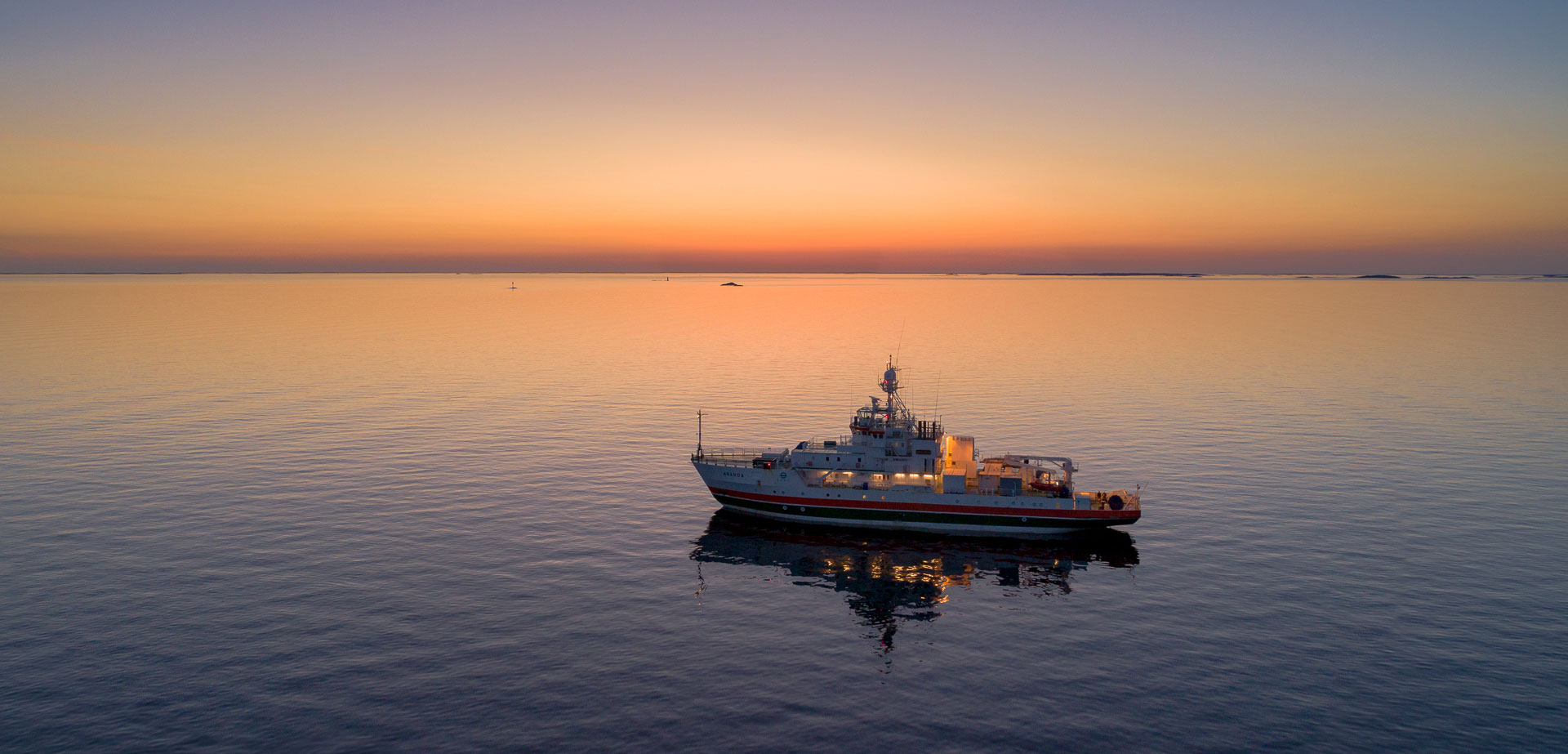The Baltic Sea Is Nearly Free of (Some) Chernobyl Radiation
Sampling efforts show that in the Baltic Sea, the concentration of radioactive cesium-137 in the water should return to baseline levels by 2023.
Article body copy
The Finnish research vessel Aranda rocks gently in the easternmost Baltic Sea. Off the side of the ship, a winch pulls up a long plastic pipe from the seafloor. It’s a calm, sunny day at sea—perfect for sampling the deep black sediment hidden 80 meters below. In the distance, through the summer air, the contours of a Russian island poke out of the sea.
Thirty-three years ago, this sky was far from clear. In April 1986, a series of explosions in one of the four reactors at the Chernobyl Nuclear Power Plant caused a massive radioactive cloud that choked the sky. The wind blew the cloud north, toward the Baltic Sea.
On the Aranda’s deck, Mikko Teräväinen, an assistant inspector from the Radiation and Nuclear Safety Authority (STUK) in Helsinki, Finland, cuts slices of the sediment into plastic bowls. The sample’s rotten egg smell is hydrogen sulfide, a sign of the chronic lack of oxygen that plagues the Baltic Sea. But Teräväinen is looking for something that has no smell, taste, or color: radioactive material. In Baltic Sea sediment, he says, “one can detect the traces of Chernobyl very easily.”
Finnish scientists have been monitoring the presence of radioactive materials in the Baltic Sea since 1984, two years before the Chernobyl nuclear reactor exploded. This data shows how radioactivity levels spiked after the disaster and how they’ve changed since.
Most of the radionuclides released by Chernobyl, such as iodine-131 and cesium-134, were short-lived. But others, including the cesium-137 and strontium-90 that Teräväinen and his colleagues are monitoring on this voyage, have persisted. Different radionuclides have distinct half-lives—the time it takes for half of the material to decay—which accounts for the varying timelines.
STUK head inspector Vesa-Pekka Vartti explains that a slow rate of water flowing out of the Baltic Sea through the Danish straits, coupled with high sedimentation rates and inflow from rivers, have made the Baltic Sea the world’s most polluted with cesium-137. To date, the highest levels of cesium-137 in the Baltic Sea have been measured in the eastern Gulf of Finland. The second most polluted area is in the Bothnian Sea, in the northwest.
Over the years, the radioactivity from Chernobyl in the water has decreased considerably, Vartti says. The team estimates that cesium-137 levels in the water will decrease to values measured before the Chernobyl disaster by 2023.
“But the cesium levels in sediments decrease much more slowly,” Vartti says. It may take up to 300 years before the cesium levels in the sediment get back to pre-Chernobyl levels. The bulk of cesium-137 is in the soft sediments, he says. If disturbed by animals living in the sediment, currents, or anchor movement, for instance, it can be mixed back into the water.
On the Aranda, the wind is picking up. The team finishes its sampling and stores the sediment samples in a freezer. Like the black clouds gathering on the horizon, the legacy of the world’s worst nuclear disaster casts a long shadow over the fragile Baltic Sea.

